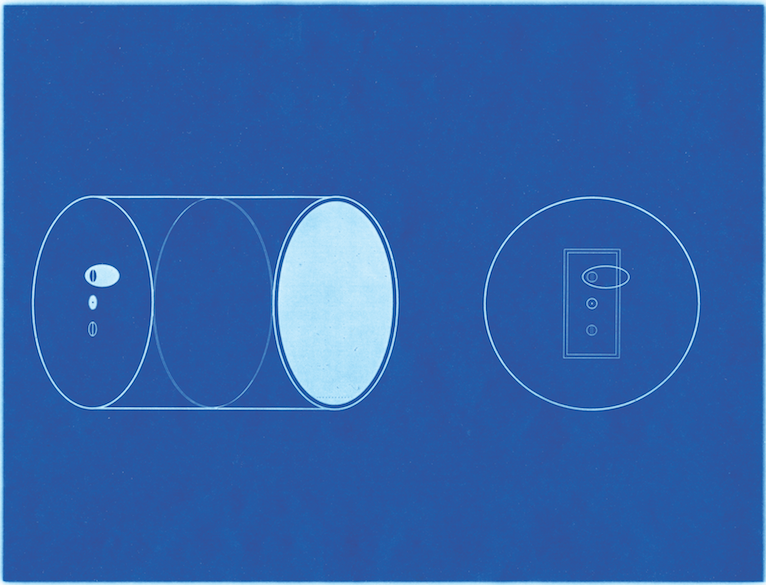I took a drive out to The Gallimaufry Goat Farm and was
struck by the vast assortment of goat life in one place.
Goats who’d go shock-still when startled, like a bolt
through the head, fall stiff as taxidermy to the ground.
All posts tagged: 2015
On Grief
I. Death
Your father died before sunrise. On a Monday, the first in January. A morning clutched in harmattan’s tenuous grip. Haze like spectral fingers. Cold as a dog’s nose. But not wet. The grasses outside were an arid brown; it hadn’t rained for months. You’ll never forget these, the disconsolate incidentals of that morning. You’ll remember, too, the black shoes that trailed from the doorway like giant soldier ants in advance. You’ll remember the shuffling feet. And the hovering faces that peered down at your mother. Draped in black. Legs splayed in front of her. You’ll remember tottering in, bleary-eyed and only half-awake, and wondering, bewildered, at the many shoes, the blur of unfamiliar faces, the whispers that rustled across the room. You’ll remember wondering what it meant to have a heart attack.
Biarritz
By DWYER MURPHY
We took the twelve-thirty train and got into the Biarritz station just after six. There was a bus schedule nailed to the wall, but the train ride had been smooth and I didn’t want to spoil our momentum, so I waved to the first in a row of taxis and offered the driver ten euros, which was quite a lot for me in those days. Probably there was a flat rate to the center of town, but the driver looked at the thin crowd coming off the train and at Katja, who was wearing espadrilles, and said ten would be okay, once he’d finished his cigarette.
On the drive in, Katja leaned against the window and didn’t say too much. The landscape was gray and battered. It was April, but winter still had a grip on everything: the low sun and the farms, with their lean cows, and the roads, which were scarred by fissures.
Millennium Camera

Jonathon Keats has been described by The New Yorker as a “poet of ideas.” Keats’s latest project is the Millennium Camera, a custom-built pinhole camera with a one-thousand-year exposure time that will remain inside Amherst College’s Stearns Steeple until 3015. In May 2015, the college’s Mead Art Museum documented the intellectual and material creation of Keats’s camera, displaying its blueprints and predecessors alongside the camera itself in an exhibition titled Jonathon Keats: Photographing Deep Time. To commemorate the opening of the exhibition, Keats spoke with Vanja Malloy, the Mead’s curator of American art, about deep-time photography and about the rapidly changing nature of humanity’s relationships with its environment and its descendants. This essay has been adapted from that conversation.
In 1988
By DAVID LEHMAN
In 1988, I went into the unisex bathroom and read the graffiti. A
graffito from 1980 had been erased: “Support your local philosopher.
Buy a jockstrap.”
The Story Behind the Scenes
By MORGAN ADAMS

I
I take the number 25 bus from Piazza San Marco north into the hills and get off at La Pietra—a stone marking one Roman mile from Florence. Behind the imposing gate, Villa La Pietra waits at the top of the long drive lined with Tuscan cypress trees.[1]This fifteenth-century villa is the centerpiece of a fifty-seven-acre estate of Renaissance-revival gardens,a vast art collection, a library of over twelve thousand volumes, and olive groves with views of the Duomo.
Crescent City
For Lauren Cerand
In my room overlooking
the Mississippi a voice tells me: in my city we bury
our dead above ground a voice whispers
not to lean against
windows not to pry open the window
Longing, A Lion
By ZHENG MIN
Translated by STEPHEN HAVEN and LI YONGYI
Inside my body there is a gaping mouth,
A lion roaring
Rushing to the end of the bridge,
As the ship glides by.
The Eyewitness
By YU NU
Translated by STEPHEN HAVEN and LI YONGYI
Morning air pumped off, cannabis-induced despondency
Replaced him and her. Far away, his ball-playing days,
His cap floating on the river, his soft tissues
Like severed seaweeds. This happened in 1976.
Imitation
The eating is like make-believe, a game
of imitation—sawdust pressed between
two hands becomes a pancake; soup pots steam










